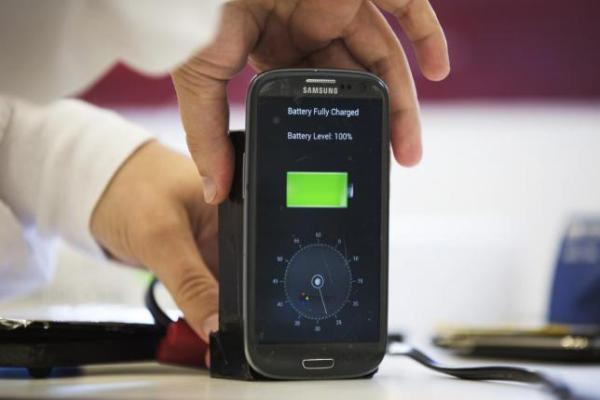Samsung Develops Graphene Technology For Increasing Phone Battery Life
| Jotham D. Funclara | | Jun 30, 2015 02:54 AM EDT |
(Photo : Reuters) With graphene technology, Samsung plans to improve the battery life of its smartphones by up to 1.8 times.
Tech company and smartphone development leader Samsung plans to blow its competitors out of the water by solving one of the greatest problems with smartphones today: battery life. Reports claim that Samsung is looking to develop graphene technology to offer what the tech company's scientists refer to as "high volumetric energy density."
Like Us on Facebook
The need for more and more data and content grows as smartphones become more advanced with each step upwards on the evolutionary ladder. This inevitably leads to the software demands exceeding the capabilities of hardware capacity, which is why many note that these days, the typical phone's battery life is far from what it was during the days of the infamous Nokia phones.
Samsung claims that the solution to this problem lies in replacing the graphite anode, which is essentially the part through which power goes through the battery, with graphene coated in silicon. According to TechTimes, this could make batteries of the near future 1.8 times more powerful than their predecessors.
It can be noted that graphene is a sheet of carbon atoms bound together with double electron bonds. It has the greatest electrical conductivity among all the known conductor materials today. This is because electricity flows quite quickly through graphene's honeycomb-style geometry. The fact that graphene is carbon-based also gives a less costly alternative to most metal conductors.
According to Samsung's researchers, the technology will "adopt multilayer graphene directly grown on the Si surface as a coating material." They further stated that "[S]ince multilayered graphene can accommodate Si volume expansion via a sliding process between adjacent layers without the need to provide void space a priori in the as-made electrode," the new graphene sheets will be able to provide more efficient operation of the silicon anodes.
Even today, Samsung is already taking bold steps to propel the graphene battery technology into the future, as it is already filing patents on its creations in countries like Korea, China, United States, and even a few in Europe. Moreover, LG is reportedly developing a new breed of batteries that rely on hexagonal shapes to improve their capacity and efficiency when used on smartphones. Reportedly, these new batteries are capable of up to four additional hours of battery life.
TagsLG, BATTERY LIFE, Graphene, graphene technology, Research
©2015 Chinatopix All rights reserved. Do not reproduce without permission
EDITOR'S PICKS
-

Did the Trump administration just announce plans for a trade war with ‘hostile’ China and Russia?
-

US Senate passes Taiwan travel bill slammed by China
-

As Yan Sihong’s family grieves, here are other Chinese students who went missing abroad. Some have never been found
-

Beijing blasts Western critics who ‘smear China’ with the term sharp power
-

China Envoy Seeks to Defuse Tensions With U.S. as a Trade War Brews
-

Singapore's Deputy PM Provides Bitcoin Vote of Confidence Amid China's Blanket Bans
-

China warns investors over risks in overseas virtual currency trading
-

Chinese government most trustworthy: survey
-

Kashima Antlers On Course For Back-To-Back Titles
MOST POPULAR
LATEST NEWS
Zhou Yongkang: China's Former Security Chief Sentenced to Life in Prison

China's former Chief of the Ministry of Public Security, Zhou Yongkang, has been given a life sentence after he was found guilty of abusing his office, bribery and deliberately ... Full Article
TRENDING STORY

China Pork Prices Expected to Stabilize As The Supplies Recover

Elephone P9000 Smartphone is now on Sale on Amazon India

There's a Big Chance Cliffhangers Won't Still Be Resolved When Grey's Anatomy Season 13 Returns

Supreme Court Ruled on Samsung vs Apple Dispute for Patent Infringement

Microsoft Surface Pro 5 Rumors and Release Date: What is the Latest?













